What Role Does Airline Ticket Price Scraping Play In Dynamic Price Optimization?
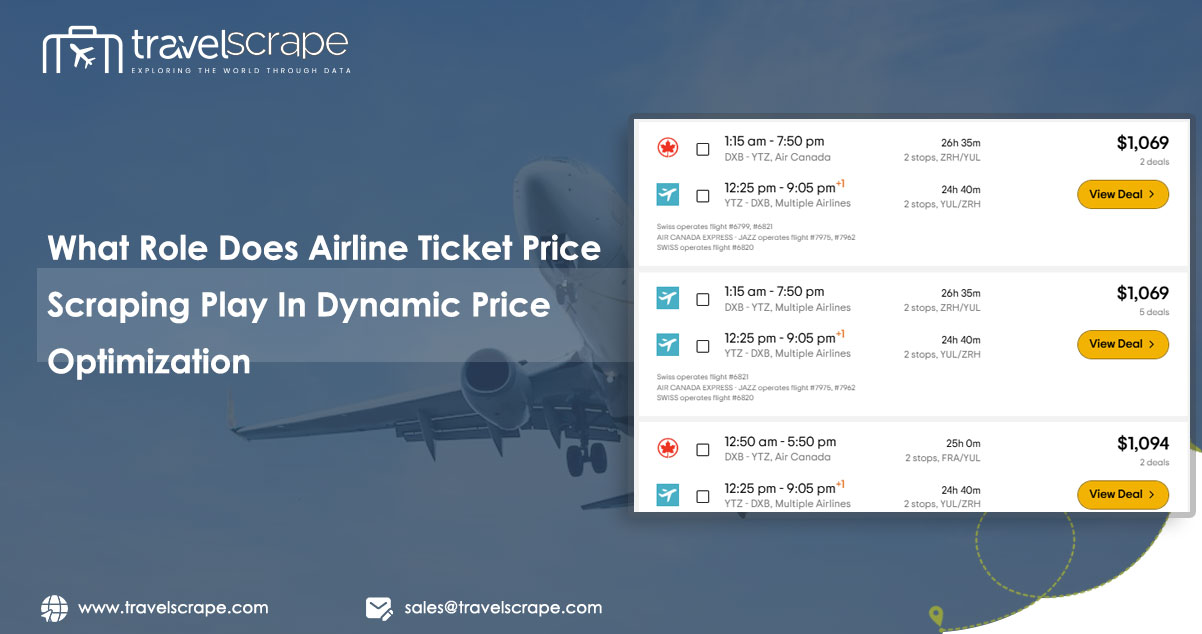
Introduction
In today's highly competitive aviation industry, airlines constantly seek ways to maximize revenue while maintaining a competitive edge. Airline Ticket Price Scraping has emerged as a crucial technological approach that enables carriers to gather extensive market intelligence and implement sophisticated pricing strategies. This practice has revolutionized how airlines approach pricing models, moving from static pricing to dynamic optimization frameworks that respond to market conditions in near real-time.
Understanding Airline Ticket Price Scraping
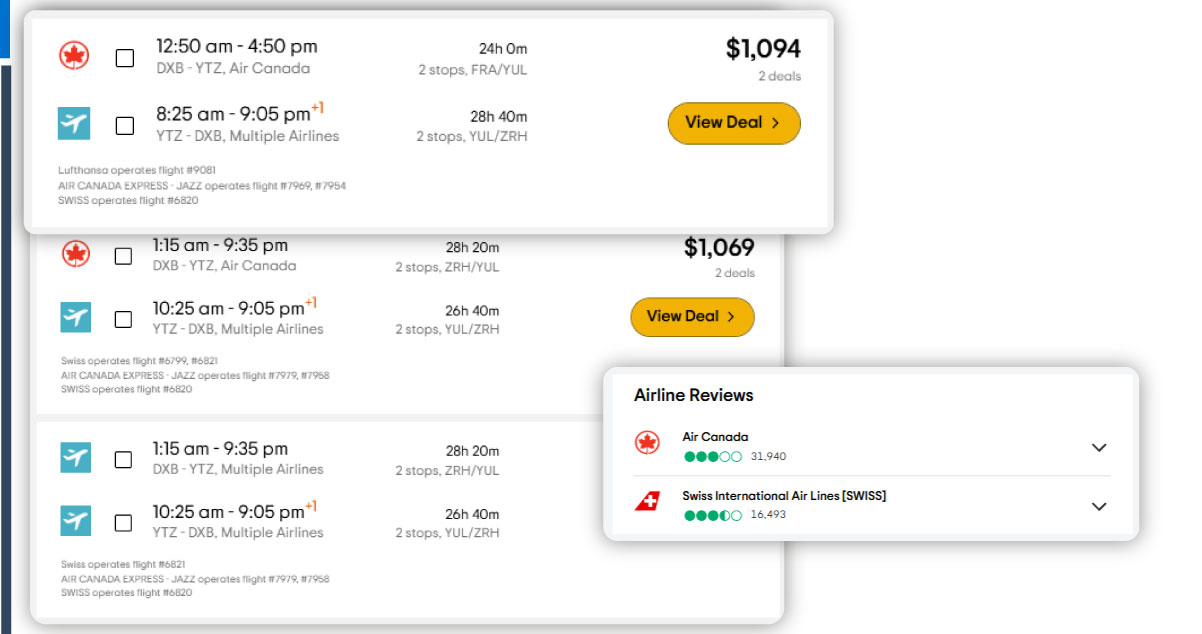
Airline Ticket Price Scraping involves systematically collecting fare data across multiple distribution channels, competitors, and periods. Modern Flight Data Scrapers automatically extract information on ticket prices, availability, booking class inventory, and ancillary offerings from numerous sources. This data forms the foundation for comprehensive market analysis and strategic pricing decisions.
Airlines operate in an environment where prices fluctuate constantly based on numerous factors. These include seasonality and demand patterns, competitive pricing movements, and route profitability requirements. Additional variables such as remaining seat inventory, days before departure, and historical booking patterns further complicate the pricing landscape. This complex interplay of factors creates a dynamic environment where prices can change by the hour or minute.
Without access to comprehensive Real-Time Airline Pricing Data, carriers operate at a significant disadvantage in the marketplace. By leveraging Airline Data Extraction technologies, companies can maintain visibility into the competitive landscape.
The Evolution of Dynamic Pricing in Aviation
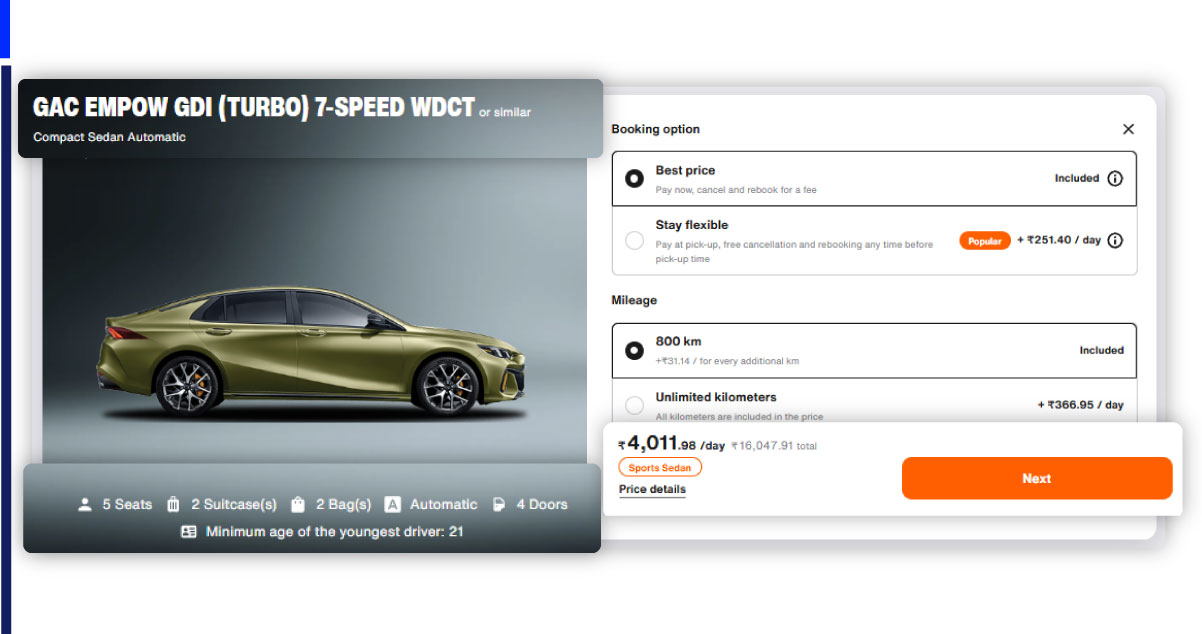
Traditional airline pricing involved relatively static fare structures with limited variation. Today's sophisticated Airline Ticket Pricing Optimization systems utilize advanced algorithms that process enormous datasets to determine the optimal price points for each flight, at each moment, through each distribution channel.
Modern dynamic pricing requires:
- Continuous monitoring of competitor pricing
- Analysis of historical pricing patterns
- Integration with demand forecasting models
- Real-time adjustment capabilities
These systems rely on Global Flight Price Trends Datasets that provide historical context and current market positioning. When combined with proprietary booking data, airlines can identify untapped revenue opportunities and adjust pricing strategies accordingly.
Leveraging Data for Competitive Advantage
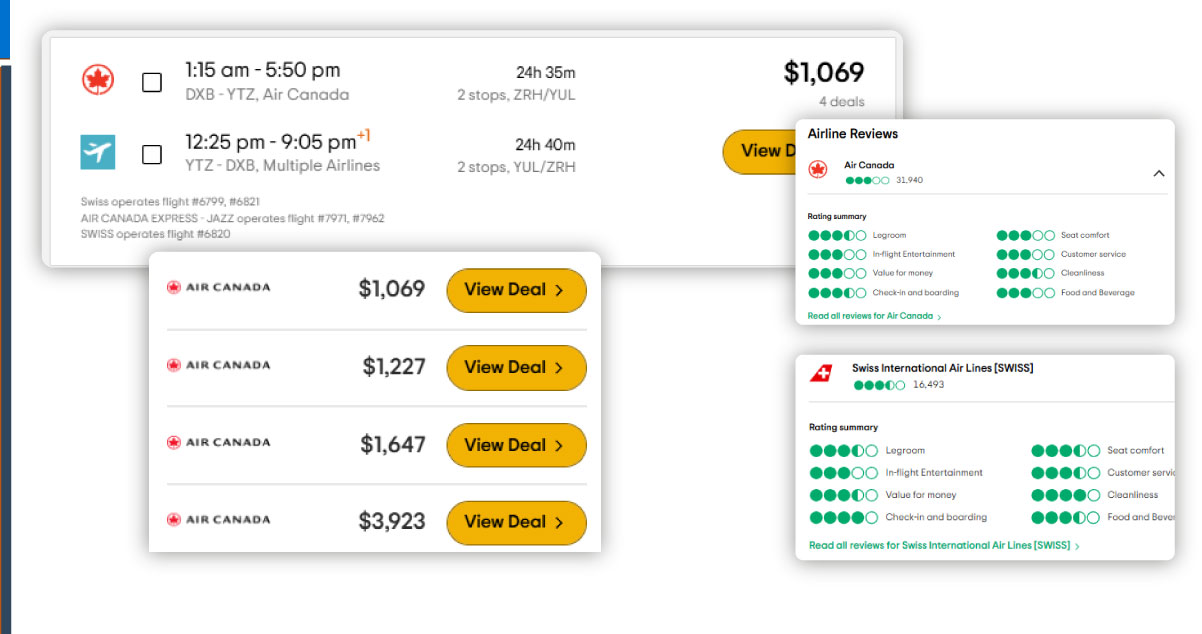
The competitive advantage gained through effective Airline Ticket Price Scraping cannot be overstated. Airlines that deploy sophisticated Airfare Analysis Tools gain visibility into:
This intelligence enables pricing analysts to make informed decisions rather than reactive adjustments. For example, noticing that a competitor consistently raises prices 21 days before departure on specific routes provides actionable intelligence for optimizing your pricing windows.
Technical Implementation of Data Collection Systems

Implementing effective Airline Data Scraping Services requires sophisticated technical infrastructure. These systems must navigate complex websites, process dynamic content, avoid detection mechanisms, and normalize data from disparate sources.
Modern implementations rely on distributed proxy networks to avoid IP blocks and balance load, while headless browser automation handles dynamic booking flows. Machine learning algorithms adapt to changing site structures, and data cleaning and normalization pipelines ensure data is standardized. Backed by scalable storage for terabytes of data, these systems also include real-time alerting to flag critical market shifts instantly.
The collected Real-Time Airline Pricing Data must then be integrated with internal systems, including revenue management, distribution platforms, and business intelligence tools. This integration ensures that pricing insights translate directly into actionable business decisions.
Ethical and Legal Considerations
While Airline Ticket Price Scraping provides tremendous business value, organizations must navigate important ethical and legal considerations. Web scraping exists in a complex legal landscape that varies by jurisdiction, with considerations including:
- Terms of service compliance
- Data privacy regulations
- Competitive intelligence boundaries
- Rate limiting and server load considerations
- Copyright implications
Responsible practitioners implement reasonable measures to minimize server impact, respect robots.txt directives where appropriate, and focus collection efforts on publicly available information. Working with established Airline Data Scraping Services can help ensure compliance with evolving legal standards while maintaining competitive intelligence capabilities.
Beyond Basic Price Data: Expanding Intelligence Gathering
Modern Flight Data Scrapers go beyond basic fare collection, capturing in-depth insights like fare rules, baggage fees, seat selection charges, and priority boarding options. They also track loyalty benefits, special services, and complex pricing tied to codeshare and interline partnerships, offering a complete view of airline pricing strategies and market positioning.
Additionally, Global Flight Schedule Datasets provide insights into capacity deployment strategies, allowing airlines to identify potential opportunities in markets where competitors may reduce frequency or capacity.
Some organizations even monitor Airport Amenities Datasets to understand the complete customer journey better and identify opportunities for service differentiation or premium pricing based on airport experience factors.
Turning Raw Data into Actionable Pricing Intelligence
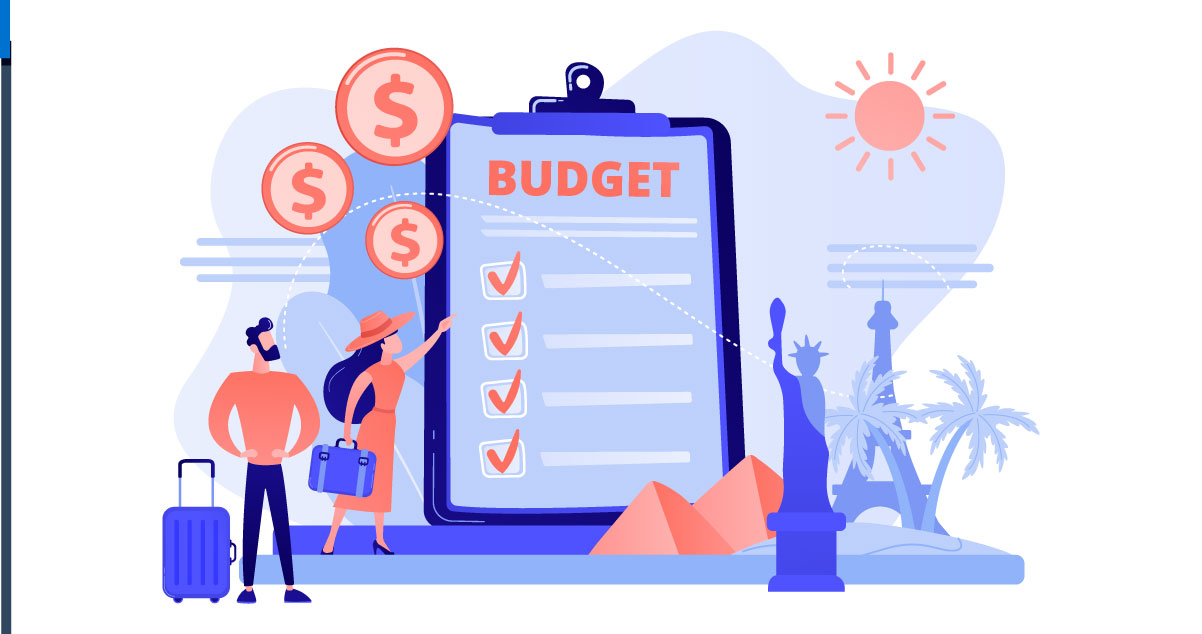
Gathering raw data is just the beginning—its real power lies in how it's interpreted. To unlock the full potential of Flight Price Data Intelligence, businesses must go beyond collection and apply advanced analytical methods that convert unstructured inputs into strategic insights.
This transformation involves:
- Standardizing fare data through robust data normalization techniques.
- Creating precise route mapping and targeted market segmentation.
- Conducting competitor benchmarking to assess relative pricing strategies.
- Analyzing historical trends for pattern recognition and forecasting.
- Applying anomaly detection to uncover pricing irregularities or unexpected shifts.
Airlines that leverage cutting-edge Airfare Analysis Tools gain a clear edge. They can pinpoint inefficiencies, detect evolving demand trends, and expose competitor weaknesses that might otherwise go unnoticed. This depth of pricing intelligence empowers more intelligent decision-making across pricing structures, inventory management, and promotional planning.
Real-World Applications of Price Intelligence
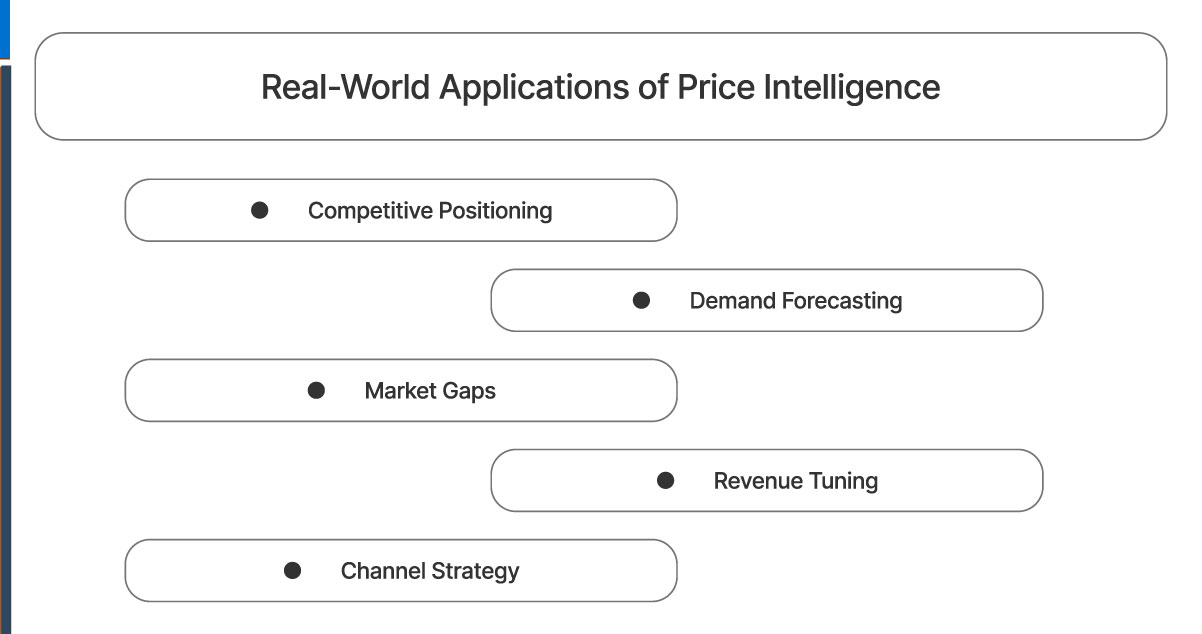
Airlines increasingly turn to Airline Ticket Pricing Optimization to enhance revenue and competitiveness across dynamic markets. Here’s how this data-driven approach is applied in fundamental operational strategies:
- Competitive Positioning: By monitoring competitor fare fluctuations, airlines can fine-tune their pricing, either aligning with rivals on price-sensitive routes or maintaining a premium stance in markets with a strong brand advantage.
- Demand Forecasting: Integrating Historical Airline Price Change Datasets with current booking behaviors enables more precise demand predictions, supporting adequate seat inventory and yield management.
- Market Gaps: Access to detailed pricing insights allows airlines to spot routes where competitors are underpricing, creating room to capture additional revenue through more innovative fare strategies.
- Revenue Tuning: With Travel Fare Intelligence's support, airlines can enhance their revenue management models, improve accuracy in forecasting price elasticity, and optimize booking curves.
- Channel Strategy: Analyzing fare discrepancies across various sales channels empowers airlines to reduce distribution costs and more effectively tailor pricing strategies for each channel.
How Travel Scrape Can Help You?
We offer robust and scalable Airline Data Extraction solutions tailored to your unique operational and strategic objectives. Whether you're tracking dynamic fares or analyzing competitive positioning, our advanced data platform delivers unparalleled accuracy and flexibility.
Our capabilities include:
- Tailored data harvesting from thousands of reliable sources.
- Enterprise-grade performance, ensuring maximum reliability and uptime.
- Flexible data delivery via APIs, data feeds, or custom formats.
- Advanced data normalization and enrichment for accuracy and usability.
- Actionable insights through our intuitive analytics dashboards.
- Ethically sourced data collection aligned with compliance standards.
Our dedicated team of aviation specialists collaborates directly with your pricing and revenue management departments to ensure you’re acquiring the most relevant Real-Time Airline Pricing Data for your target routes and competitive landscape. Recognizing that no two airlines operate the same, we fine-tune our Flight Data Scraper to support your strategic objectives with precision.
But we don’t stop at fare collection. Travel Scrape delivers deep, data-driven Travel Fare Intelligence that supports smarter decision-making and measurable revenue growth for airline operators worldwide.
Conclusion
In a market where pricing strategies directly influence profitability, Airline Ticket Price Scraping is critical for maximizing profitability and staying ahead. With pricing becoming more dynamic and personalized, real-time market insights are needed more than ever. Airlines that don’t adopt these tools risk falling behind.
The future of airline pricing will be shaped by increasingly sophisticated data collection and analysis, with artificial intelligence playing a key role in pricing decisions. Leading carriers already invest in these advanced capabilities to maintain a competitive edge, including Travel Aggregators integration.
Ready to revolutionize your pricing strategy with cutting-edge data intelligence? Contact Travel Scrape today. Our team of experts will provide tailored solutions that deliver measurable revenue improvements through advanced Travel Industry Web Scraping capabilities.